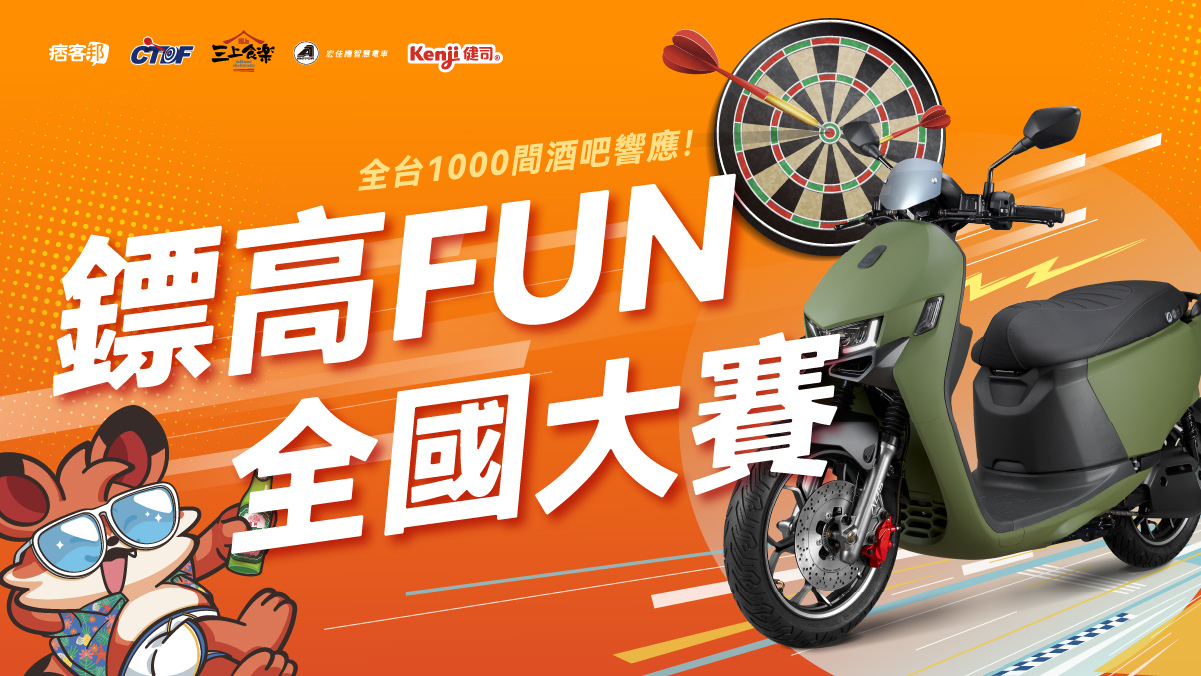8D問題解決法(Eight Disciplines Problem Solving)
是福特汽車公司開發的一種方法,用於處理和解決問題,通常由質量工程師或其他專業人員使用。
專注於產品和過程改進,其目的是識別、糾正和消除重複出現的問題。
它基於對問題的統計分析和通過確定根本原因來確定問題的根源,建立永久性的糾正措施。
雖然它最初是Eight Disciplines,但後來擴充初始規劃階段。8D遵循PDCA循環的邏輯。
D0:準備和響應行動:計劃解決問題並確定先決條件。提供應急響應措施。
D1:成立團隊:建立一個具有產品/製程知識的人員組成的團隊。在解決問題時,隊友提供了新的視角和不同的想法。
D2:描述問題:通過可量化的方式(5W2H) 層別問題,包括問題的人員、內容、地點、時間、原因、方式和數量(who, what, where, when, why, how, and how many)
D3:制定臨時遏制計劃:定義並實施遏制措施,將問題隔離開來。
D4:確定並驗證根本原因和逃逸點:確定所有可以解釋發生問題的適用原因。還要確定為什麼在問題發生時沒有注意到問題。所有原因均應核實或證明。可以使用五個為什麼或魚骨圖來根據已識別的結果或問題來映射原因。
D5:永久措施驗證並解決問題:驗證永久措施是否會真正解決問題。
D6:定義並實施校正措施:定義並實施最佳糾正措施。此外,使用改進的經驗證據驗證校正措施。
D7:防止再次發生措施:修改管理系統、操作系統、實踐和程序,以防止此類問題和類似問題再次發生。
D8:感謝團隊的貢獻:認可與感謝團隊的集體努力。
參考文獻: https://en.wikipedia.org/wiki/Eight_disciplines_problem_solving
8D Report
不合格管理和持續改進的系統方法是每個管理體系的關鍵要素。
8D 方法使用結構化的八步法來解決問題。目標是直面問題並發現管理系統中導致問題首先發生的弱點。8D 流程的輸出是 8D 報告。
8D 報告中的步驟也稱為“學科”,因此得名 8D 報告。步驟是:
1D:團隊組建
8D 程序用於解決精確的問題。該方法基於團隊合作解決問題。團隊合作必須協調和引導。該團隊應僅包括積極參與該過程並在後續步驟中被分配任務或責任的合格人員。高效的團隊通常規模不大。
2D:問題描述
問題定義得越清楚,解決的可能性就越大。解決問題必須基於事實,而不是觀點。明確問題類型、問題所在、何時發生、故障程度有多大以及發生了多少次是很重要的。描述必須具體且易於理解。如果可能,應該指定一個假定的原因。完整的問題描述為團隊提供解決問題的方向,並幫助他們確定任務的優先級。例如,有缺陷的產品已經發送給客戶這一事實對於決定採取哪些遏制措施以及確定這些措施的優先順序非常重要。好的描述是以後解決問題的基礎。
3D:臨時遏制措施
在這個 8D 報告步驟中,我們嘗試限制問題範圍並保護我們的客戶。臨時遏制措施是一種“急救”,可以保護客戶免受問題的影響,直到我們確定根本原因並實施永久性糾正措施。遏制行動不得引入任何新問題。它們必須用精確的信息(產品代碼、批號、日期等)仔細記錄。然後可以使用此信息來驗證所執行操作的有效性。
4D:根本原因分析
為了有效防止問題再次發生,我們必須找到問題的根本原因並消除它。在極少數情況下,根本原因可能不止一個。為了確定根本原因,需要進行系統的、有據可查的分析。每個可能的原因都應該根據問題描述和測試數據進行測試。根本原因通常被其他原因所掩蓋,並且很難找到。在分析過程中可以使用許多方法。例如,is /is not、5 Whys、Ishikawa Fishbone 等。
5D:糾正措施
糾正措施的目標是消除根本原因並防止問題再次發生。如果採取了良好的糾正措施,我們將永遠不必為此問題編寫另一份 8D 報告。在這一步中,我們專注於已經出現的特定事件或問題。必須仔細記錄糾正措施。對於每項行動,應確定負責人,並應選擇計劃實施行動的日期。行動完成後,應記錄實際實施日期和結果。對於確定的每個根本原因,通常需要採取許多糾正措施。
6D:糾正措施的驗證
此 8D 報告步驟的目的是驗證步驟 5D 中採取的措施是否已消除根本原因。如果我們發現根本原因沒有完全消除,那麼我們必須指出額外的措施。有時需要返回到步驟 4D 中的根本原因分析並重複該循環。
7D:預防措施
乍一看,此步驟與步驟 5D 非常相似。8D Report 中這兩個步驟的區別在於我們執行它們的原因和最終目標。步驟 5D 中的操作旨在防止現有問題再次發生。相比之下,預防措施可消除潛在問題的原因並防止其發生。7D 行動是主動的,面向未來的潛在事件。行動通常基於 FMEA 分析的結果或對負面趨勢的觀察。通常,具體問題會鼓勵我們考慮同一產品上可能出現的其他問題,或者其他產品或過程中可能出現的相同問題。
8D:團隊和個人認可
在 8D 流程的最後是認可團隊努力和特殊團隊成員貢獻的時候。這也是記錄經驗教訓的一個好點。這是冠軍向那些幫助解決這個問題的人表示感謝的機會。
參考文獻: https://www.8dreport.com/articles/8d-report/
8D report 格式說明
8D report 是組裝業界最常用的『問題分析與解決』的工具,它通常被用在回覆客戶的投訴案件報告上,所謂【8D】是【8 disciplines process (八個紀律作業程序)】的簡寫,按照規定的步驟順序,可以幫助你並讓你的客戶一步一步的了解,問題是如何發現或發生的、如何分析問題並找到真正的原因、採取哪些預防措施來解決問題、並驗證問題真的解決了。其實這跟 QC Story 非常像,只是名詞有點不同罷了,精神是一樣的,都是建立一套系統來釐清問題並解決。
8D report 的樣式非常多,但基本上方法大同小異,只要抓到節奏及重點就可以了,底下就8D report 的內容大致說明如下,篇幅有限,如果去品質學會上課可以花5~6個鐘頭:
Discipline 1. Form the Team
D1-第一步驟: 建立解決問題小組。 要解決一個問題通常都得跨部門,以電子組裝廠為例,一般來說小組的基本成員應包含下列人員,當然可以是需要找其他部門的人來參與。
- 品管部(Quality Assurance):通常是小組召集人,負責回答客戶的問題。
- 製程部(process):負責找出製程當中哪裡出了問題。
- 測試部(Testing):尋找為何無法由測試方法測出有問題的產品。
- 生產部(Production):配合工程師的要求,作實驗或是收集數據,以利問題的發現並協助執行解決方案。
D2-第二步驟: 描述問題。 運用5W1H(Who, What, Where,When, Why, How),向團隊說明問題是在何時、何地、發生了什麽事、嚴重程度、目前狀態、如何緊急處理,如果可以的話盡量展示相關的照片和收集到的證物。把自己比擬為 CSI犯罪現場的鑑視人員,將所有的證物、細節描述的越清楚,團隊就能越快進入狀況,解決問題的速度也會越快。
Discipline 3. Contain the Problem
D3-第三步驟: 暫時性對策。 當問題發生時,不論問題找到與否,都必須要先止血,所以會先採取一些必要的暫時性的措施。比如說如何在客戶端幫忙篩選出有問題的產品,或者是更換良品給客戶,讓客戶可以繼續生產或是出貨。在製造端應該要先採取措施防止問題產品繼續發生或出到客戶的手上,例如更換機器生產、加嚴篩選、全檢、將自動改爲手動、庫存清查等等。暫時對策決定後,應立刻交由團隊成員帶回執行,並隨時回報成效。
Discipline 4. Identify the Root Cause D4-第四步驟: 找出問題真正原因。 可以運用QC手法的【要因分析圖(魚骨圖)】,就人(員)、工(製程)、(來)料、機(器)、量(測)、及環(境)等六個面向,逐步檢討找出問題可能發生的原因,仔細比較、分析問題發生的前、候變動的狀況,比如說人員是否變動?作業手法是否更動?廠商來料是否變更?治具是否更換?跟環境的溫度、溼度是否相關?經驗告訴我們,日常作業的資料收集越是齊全的工廠,找到真正問題的速度就越快,例如有日常修理報表,Cpk(統計製程),良率及時通報系統..等。也可以運用『實驗計畫』找出最佳製。
Discipline 5. Formulate and Verify Corrective Actions D5-第五步驟: 選擇永久對策。 找到造成問題的主要原因後,即可開始擬出對策的方法。對策的方法也許有好幾種,例如修理或更新模具。試試對可能的選擇列出其優缺點,要花多少錢?多少人力?能持續多久? 再對可能的方法作一最佳的選擇,並且確認這樣的對策方法不會産生其他副作用。
Discipline 6. Correct the Problem and Confirm the Effects D6-第六步驟: 執行及驗證永久對策。
當永久對策準備妥當,則可開始執行及停止暫時對策,並且對永久對策作一驗證。請注意,驗證工作非常重要,最好可以模擬、重製(duplicate)問題發生的現象,才算是真正找到問題的主因。比如說IC的腳損傷,是因為模具損傷所造成的,更換好的模具上去問題就解決了,這時要重新再把有問題的模具裝上,確定這套模具還會重複同樣的不良現象,這樣才算是完成驗證,如果重新裝回原來的模具,不良現象也沒有出現,可能原因就不一定出在模具,必須重新尋找主因。
Discipline 7. Prevent the Problem D7-第七步驟: 防止類似問題再發生。
其他的生産雖然尚未發生問題,亦需作同步改善,防止問題再發,同常ISO認證的工廠,必須透過一定程序把永久對策標準化,比如說更改作業指導書,或是規定於作業程序(procedure)中。
Discipline 8. Congratulate the Team D8-第八步驟: 感謝團隊。
對於努力解決問題之團隊予以嘉勉,使其産生工作上的成就感,並極樂意解決下次碰到的問題。
原文版
A systematic approach to nonconformity management and continuous improvements are the key elements of every management system.
8D methodology uses a structured eight step approach to problem solving. The objective is to face the problem and discover the weaknesses in the management systems that permitted the problem to occur in the first place. The output of an 8D process is an 8D report.
The steps in 8D Report are also called “disciplines,” hence the name 8D Report. The steps are:
1D: Team Formation
8D procedures are used for solving exact problems. The approach is based on a team working together to solve a problem. Teamwork must be coordinated and guided. The team should include only competent persons actively involved in the process and who have been assigned a task or responsibility in subsequent steps. Efficient teams are usually not big.
2D: Problem Description
The more clearly the problem is defined the more likely it will be resolved. Problem solving must be based on facts, not opinions. It is important to clarify the issue type, what is wrong, when did it happen, how big the failure extent is and how many times has it happened. The description must be specific and easy to understand. If possible, a supposed cause should be specified. A complete problem description offers the team directions to solve the problem and helps them prioritize tasks. For example, the fact that defective products were already sent to a customer is very important in deciding which containment actions to take and in prioritizing those actions.
Good description is a foundation for later problem solving.
3D: Interim Containment Actions
In this 8D Report step we try to limit the problem extent and protect our customer. Interim containment actions are a “first aid” that protects the customer from the problem until we define the root cause and implement permanent corrective actions.
Containment actions must not introduce any new problems. They have to be carefully documented with precise information (product codes, lot numbers, dates, etc.). This information can then be used to verify effectiveness of performed actions.
4D: Root Cause Analysis
To effectively prevent a problem from occurring again we have to find the root cause of this problem and remove it. In rare situations there could be more than one root cause. To identify the root cause, a systematic and well-documented analysis is needed. Each possible cause should be tested against the problem description and test data. Root cause is often hidden by other causes and can be hard to find. There are many methods that can be used during the analysis. For example, is /is not, 5 Whys, Ishikawa Fishbone and others.
5D: Corrective Actions
The goal of corrective actions is to remove the root cause and prevent the problem from ever happening again. If good corrective actions have been taken we should never have to write another 8D report for this problem. In this step we are concentrated on a specific event or problem that has already arisen.
The corrective actions have to be carefully documented. For each action a responsible person should be identified and the date when the action is planned to be implemented should be selected. When an action has been finished the actual date of implementation and results should be recorded.
For each root cause identified there are usually many corrective actions needed.
6D: Verification of Corrective Actions
The purpose of this 8D Report step is to verify if the actions taken in step 5D have removed the root cause. If we discover that the root cause has not been completely removed, then we have to point out additional measures. It is sometimes necessary to return to root cause analysis in step 4D and repeat the cycle.
7D: Preventive Actions
At first glance this step is very similar to step 5D . The difference between these two steps in 8D Report is in the reason why we perform them and in final goal. Actions in step 5D are meant to prevent an existing problem from happening again. In contrast, preventive actions remove causes for a potential problem and prevent it from ever happening. 7D actions are proactive and oriented towards a potential event in the future.
Actions are usually based on results of FMEA analysis or observations of negative trends. Often, concrete problems encourage us to think about other problems that could arise on the same product or about the same problem arising on another product or process.
8D: Team and individual recognition
At the end of an 8D process is the time to recognize the team efforts and special team member contributions. This is also a good point to document lessons learned.
This is a chance for the Champion to express thanks to those who have helped in dealing with this problem.


 留言列表
留言列表


